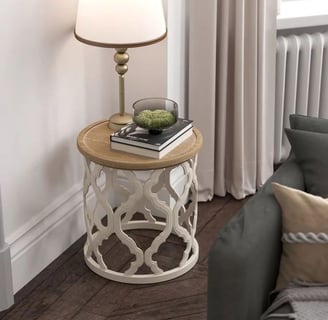Sustainable Wood Sources for Eco-Friendly Handicrafts
As environmental awareness grows, so does the demand for sustainable practices in various crafts, including woodcarving. Using eco-friendly wood sources is essential for minimizing environmental impact and ensuring the longevity of our forests.


As environmental awareness grows, so does the demand for sustainable practices in various crafts, including woodcarving. Using eco-friendly wood sources is essential for minimizing environmental impact and ensuring the longevity of our forests. This guide explores some of the best sustainable wood sources for creating beautiful handicrafts while protecting our planet.
1. Reclaimed Wood
Reclaimed wood is salvaged from old buildings, barns, and furniture, giving it new life and purpose. By using reclaimed wood, you reduce the need for new lumber and prevent waste. The unique patina and history of reclaimed wood add character and charm to your handicrafts.
Benefits: Reduces waste, preserves historical wood, unique appearance.
Applications: Furniture, decorative items, rustic designs.
2. Bamboo
Bamboo is a highly renewable resource that grows rapidly, making it an excellent sustainable alternative to traditional wood. It is strong, flexible, and versatile, suitable for a wide range of handicrafts.
Benefits: Fast-growing, renewable, durable.
Applications: Furniture, utensils, decorative pieces.
3. FSC-Certified Wood
The Forest Stewardship Council (FSC) certifies wood products that come from responsibly managed forests. By choosing FSC-certified wood, you support sustainable forestry practices that protect ecosystems and ensure the well-being of local communities.
Benefits: Supports sustainable forestry, environmentally responsible.
Applications: Furniture, sculpture, various woodcrafts.
4. Fast-Growing Hardwoods
Fast-growing hardwoods like poplar, alder, and birch are more sustainable options as they regenerate quickly compared to slower-growing species like oak and mahogany. These woods are versatile and suitable for a variety of handicrafts.
Benefits: Renewable, versatile, readily available.
Applications: Carvings, furniture, utensils.
5. Plantation-Grown Wood
Plantation-grown wood comes from trees specifically planted for harvest. This method ensures a continuous supply of wood while reducing the pressure on natural forests. Common plantation-grown woods include teak, eucalyptus, and rubberwood.
Benefits: Sustainable, controlled harvesting, consistent quality.
Applications: Furniture, flooring, decorative items.
6. Urban Wood
Urban wood is sourced from trees that are removed from urban areas due to disease, storm damage, or construction. Instead of being discarded, these trees are repurposed into valuable wood products.
Benefits: Reduces waste, repurposes urban trees, unique character.
Applications: Furniture, sculptures, art pieces.
7. Recycled Wood Composites
Recycled wood composites are made from wood fibers and recycled plastics. They offer the look and feel of wood while utilizing waste materials. These composites are durable, low-maintenance, and environmentally friendly.
Benefits: Utilizes waste materials, durable, low-maintenance.
Applications: Outdoor furniture, decking, decorative items.
Conclusion
Choosing sustainable wood sources for your handicrafts is a vital step toward protecting the environment and promoting responsible craftsmanship. By exploring options like reclaimed wood, bamboo, FSC-certified wood, fast-growing hardwoods, plantation-grown wood, urban wood, and recycled wood composites, you can create eco-friendly and beautiful pieces that reflect your commitment to sustainability.
